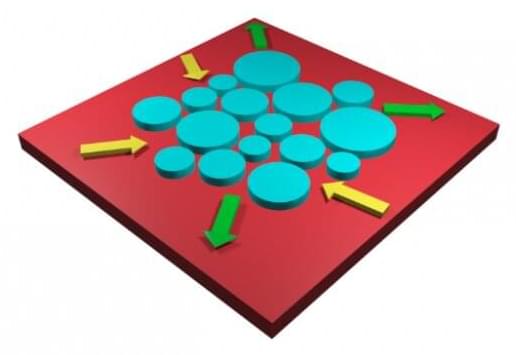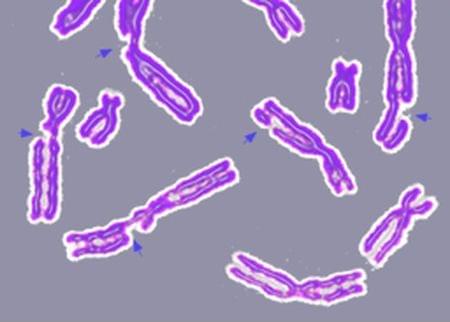The immediate challenge is to produce batteries in the U.S., but the longer challenge will be to secure supplies of critical minerals such as lithium and cobalt.



Circa 2016
A radically new form of lithium-oxygen batteries avoids many of the problems that have prevented the uptake of what is, in theory, the ultimate transportation battery. If the work can be scaled up, it could mark the end of gasoline-powered cars.
The cost, weight, and insufficient lifespan of batteries represents a major obstacle to electric cars replacing internal combustion engines on our roads. There are two paths to address this: One, like Aesop’s tortoise, involves slow incremental improvements in existing lithium-ion batteries, collectively bringing down the cost and extending the range of electric vehicles.
The other path involves a shift to a radically better technology, of which the one with the greatest potential is lithium-oxygen, also known as lithium-air. The announcement in Nature Energy of a very different way of making lithium-oxygen batteries indicates it is not time to write off the hare in this race.



An unusual protein structure known as a “rippled beta sheet,” first predicted in 1953, has now been created in the laboratory and characterized in detail using X-ray crystallography.
The new findings, published in July in Chemical Science, may enable the rational design of unique materials based on the rippled sheet architecture.
“Our study establishes the rippled beta sheet layer configuration as a motif with general features and opens the road to structure-based design of unique molecular architectures, with potential for materials development and biomedical applications,” said Jevgenij Raskatov, associate professor of chemistry and biochemistry at UC Santa Cruz and corresponding author of the paper.

The skin is one of the largest and most accessible organs in the human body, but penetrating its deep layers for medicinal and cosmetic treatments still eludes science.
Although there are some remedies—such as nicotine patches to stop smoking—administered through the skin, this method of treatment is rare since the particles that penetrate must be no larger than 100 nanometers. Creating effective tools using such tiny particles is a great challenge. Because the particles are so small and difficult to see, it is equally challenging to determine their exact location inside the body—information necessary to ensure that they reach intended target tissue. Today such information is obtained through invasive, often painful, biopsies.
A novel approach, developed by researchers at Bar-Ilan University in Israel, provides an innovative solution to overcoming both of these challenges. Combining techniques in nanotechnology and optics, they produced tiny (nanometric) diamond particles so small that they are capable of penetrating skin to deliver medicinal and cosmetic remedies. In addition, they created a safe, laser-based optical method that quantifies nanodiamond penetration into the various layers of the skin and determines their location and concentration within body tissue in a non-invasive manner—eliminating the need for a biopsy.

Be it magnets or superconductors, materials are known for their various properties. However, these properties may change spontaneously under extreme conditions. Researchers at the Technische Universität Dresden (TUD) and the Technische Universität München (TUM) have discovered an entirely new type of these phase transitions. They display the phenomenon of quantum entanglement involving many atoms, which previously has only been observed in the realm of a few atoms. The results were recently published in the scientific journal Nature.
New fur for the quantum cat
In physics, Schroedinger’s cat is an allegory for two of the most awe-inspiring effects of quantum mechanics: entanglement and superposition. Researchers from Dresden and Munich have now observed these behaviors on a much larger scale than that of the smallest of particles. Until now, materials that display properties, like magnetism, have been known to have so-called domains—islands in which the materials properties are homogeneously either of one or a different kind (imagine them being either black or white, for example).

A new study has found that “diamond rain,” a long-hypothesized exotic type of precipitation on ice giant planets, could be more common than previously thought.
In an earlier experiment, researchers mimicked the extreme temperatures and pressures found deep inside ice giants Neptune and Uranus and, for the first time, observed diamond rain as it formed.
Investigating this process in a new material that more closely resembles the chemical makeup of Neptune and Uranus, scientists from the Department of Energy’s SLAC National Accelerator Laboratory and their colleagues discovered that the presence of oxygen makes diamond formation more likely, allowing them to form and grow at a wider range of conditions and throughout more planets.

Linear analysis plays a central role in science and engineering. Even when dealing with nonlinear systems, understanding the linear response is often crucial for gaining insight into the underlying complex dynamics. In recent years, there has been a great interest in studying open systems that exchange energy with a surrounding reservoir. In particular, it has been demonstrated that open systems whose spectra exhibit non-Hermitian singularities called exceptional points can demonstrate a host of intriguing effects with potential applications in building new lasers and sensors.
At an exceptional point, two or modes become exactly identical. To better understand this, let us consider how drums produce sound. The membrane of the drum is fixed along its perimeter but free to vibrate in the middle.
As a result, the membrane can move in different ways, each of which is called a mode and exhibits a different sound frequency. When two different modes oscillate at the same frequency, they are called degenerate. Exceptional points are very peculiar degeneracies in the sense that not only the frequencies of the modes are identical but also the oscillations themselves. These points can exist only in open, non-Hermitian systems with no analog in closed, Hermitian systems.

A multidisciplinary team of Indiana University researchers have discovered that the motion of chromatin, the material that DNA is made of, can help facilitate effective repair of DNA damage in the human nucleus—a finding that could lead to improved cancer diagnosis and treatment. Their findings were recently published in the Proceedings of the National Academy of Sciences.
DNA damage happens naturally in human body and most of the damage can be repaired by the cell itself. However, unsuccessful repair could lead to cancer.
“DNA in the nucleus is always moving, not static. The motion of its high-order complex, chromatin, has a direct role in influencing DNA repair,” said Jing Liu, an assistant professor of physics in the School of Science at IUPUI. “In yeast, past research shows that DNA damage promotes chromatin motion, and the high mobility of it also facilitates the DNA repair. However, in human cells this relationship is more complicated.”